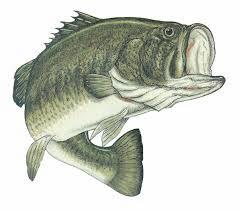
Let's Go Fishing!
|

Let's Go Fishing!
| Fishing Licenses Requirements:
https://www.alabamainteractive.org/dcnr_hf_license/welcome.action?apk=hf
(Buy your licenses local or online) No Need for fishing gear Hire a professional "fishing guide service" who furnishes everything you need: http://www.stripesandspots.com/ (This guide is located within the Stillwaters area.) Other Guides: Fish Tales & Bait Shop http://www.fishtalesbait.com/; Tooned in Guide Service http://www.toonedinguideservice.com/ Video "In Search of Striped Bass": http://www.youtube.com/watch?v=UjzJUoR02PM Local Marina Info (Rent a Boat): (Harbor Pointe Marina is only about 2 Minutes Away .7 Mile) Harbor Pointe Marina: Welcome to Harbor Pointe Summer Store Hours. Memorial Day TIL Labor Day. Monday-Thursday 8:30AM TIL 5:00PM. Friday-Saturday 8:00AM TIL ... Call (256) 825-0600 for current store hours. Located at 397 Marina Point Rd, Dadeville, AL 36853 - Video of Harbor Pointe Marina: http://www.youtube.com/watch?v=Tln1WFHmo6w
|
Lake Martin Fishing Information The following information is found on website: http://www.outdooralabama.com/fishing/freshwater/where/reservoirs/martin/ Background: Black crappie collected in the fall of 2003 were captured at an extremely high rate, suggesting that this fishery will be sufficient for the next few years. Crappie growth rates indicated that fish reached 10 inches in about two years. Striped bass were captured at a somewhat lower rate than usual, although white bass abundance was extremely high. Stocking: Fishing: Popular bass lures include 4-inch finesse worms, jigs, spinnerbaits, and floating trick worms. Small lures generally produce better than larger ones, which is typical of clear water impoundments.Spotted bass usually relate to deep structure like rocky points, humps, or ledges; while largemouth bass usually remain much shallower and relate to cover like vegetation, brushpiles or log jams in the back of small coves and pockets. Spotted bass are notorious for their schooling behavior in this lake, particularly during colder months. Lake Martin is very popular among tournament bass fishermen and is unique in that most tournaments are held at the Wind Creek State Park on the north end of the lake, near Alexander City. Wind Creek State Park has atournament weigh-in station on site. Occasionally, small club or pot tournaments are held at the Kowaliga Creek boat ramp on Highway 63. This lake is a very popular tournament lake because most anglers find it relatively easy to catch fish; however, the fish are generally small and winning weights are low when compared to other Alabama reservoirs. Many tournament anglers find success by catching a quick limit of spotted bass and then spending the remainder of the tournament attempting to catch bigger largemouth bass. Lake Martin has excellent crappie fishing with large fish being caught frequently. The current state recordwhite crappie (4 lbs. 9 oz.) was caught here in May, 2000. Crappie often congregate around blow-downs or stumps during springtime and can be caught using live minnows. The best crappie fishing is in the upstream areas of the lake, particularly around Wind Creek State Park and in Elkahatchee Creek. During winter months, crappie remain in large schools in open, deep water. Bluegill can be caught from Lake Martin much easier than in many other reservoirs due to the clear water which makes locating bedding fish much easier; however, care must be taken when approaching these areas. Peak bluegill spawning activity usually occurs near the first full moon in May, and may be repeated each month through September or October. Live crickets or tiny beetle-spins are the best choices when targeting bluegill. Shellcracker are also abundant in the lake and often reach very large sizes. This species is most easily caught using redworms fished on the bottom in shallow coves during late spring. Yellow perch are a species that have relatively recently appeared in the Tallapoosa River drainage. They are easily identified by their six to nine black vertical saddles across the back, which extend to the white stomach region. A yellowish green coloration covers the rest of the body, while the pelvic and anal fins are orange to red. This species is in the same family as walleye and sauger (jack), but yellow perch do not get nearly as large. It is an excellent tasting fish with very firm, white flesh. Striped bass are also popular sport fish in Lake Martin. Being an open water species, the striped bass rarely feeds near the shoreline, like other gamefish, so anglers must learn to fish offshore in order to be successful. These fish relate loosely to structure and feed almost entirely upon shad. When water temperatures are cooler, stripers tend to be more active and can be caught near the surface using artificial baits like large white hair jigs, chrome lipless crank baits, and especially Zara Spooks. Their annual spring spawning migration takes them to the shoals located on the upper end of the lake on the main stem of the Tallapoosa River, as well as Hillabee Creek and Sandy Creek. During warmer months, striped bass spend most of their time in deep water (50-80 ft.) and are usually caught using live shad tight-lined beneath the boat. Special striped bass regulations apply. |
|